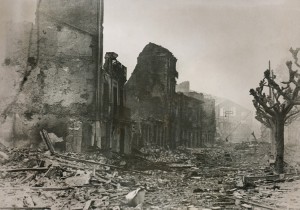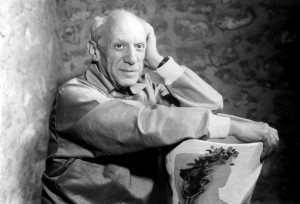Guernica: 80 Years After
Thursday, April 27th, 2017April 27, 2017
Eighty years ago yesterday, on April 26, 1937, Nazi German and fascist Italian bombers attacked the Basque city of Guernica in northern Spain. The bombing occurred during the Spanish Civil War (1936-1939), which was fought between right-wing Nationalist rebels and the liberal Republican forces of Spain’s democratically elected government. Spanish Nationalist leader Francisco Franco supported the air attack, which destroyed the Basque town and killed over 1,500 people—mostly women, children, and elderly people. News of the bombing generated a storm of international protests and demonstrations, and the incident became known as a symbol of fascist brutality. Spanish artist Pablo Picasso—outraged by the attack—captured the terror of the bombing in his masterpiece Guernica. The work is considered one of the most powerful antiwar paintings in history.

Guernica is considered one of Picasso’s masterpieces. Picasso painted this symbolic work as a protest against the 1937 bombing of the Spanish town of Guernica during the Spanish Civil War. Credit: Oil on canvas, 25 1/2 by 11 1/2 feet (7.8 by 3.5 meters); the Reina Sofia Museum, Madrid (MAS); © Estate of Pablo Picasso/Artists Rights Society (ARS), New York.
Picasso painted Guernica as a commission for the Spanish Pavilion in the Paris World’s Fair of 1937. The large picture is 25½ feet (7.8 meters) long and 11½ feet (3.5 meters) high. Picasso completed the work in about a month—from May 1 to June 4, 1937—of feverish activity. He used several of the stylistic techniques that appear in his earlier paintings, notably the fragmented figures of Cubism and abstract forms of African sculpture.

The ruins of Guernica, Spain, smolder in the aftermath of an air attack on the town on April 26, 1937. The bombing outraged Spanish artist Pablo Picasso and inspired him to create Guernica, one of his most famous works. Credit: © Everett Historical/Shutterstock
Picasso painted Guernica in somber gray, black, and white colors. He used distortions and exaggerations to convey the fear, suffering, horror, and misery of the scene. Among the central figures are victims of the violence, including a wounded horse, a dead soldier, a screaming woman holding her dead baby, and a bull, which Picasso often used as a symbol of Spain. The work has stimulated many interpretations, though the artist consistently refused to provide any insight into the symbolism of the work.
To keep Guernica safe during World War II (1939-1945), Picasso—who lived in France—sent the painting to New York City’s Museum of Modern Art, where it remained until being returned to Spain in 1981. Guernica now hangs in the Museo Nacional Centro de Arte Reina Sofía in Madrid, Spain, where a major 80th anniversary exhibition—called “Pity and Terror in Picasso: The Path to Guernica”—began April 5, 2017, and runs through September 4.
Guernica, a town with little strategic importance, was attacked to test the effects of bombing civilian targets in an effort to demoralize the enemy. Such attacks illustrated the brutality of the fascist Nationalists and their leader, Francisco Franco. The Nationalists—supported by Nazi Germany and Fascist Italy—won the Spanish Civil War, and Franco ruled Spain as a dictator until his death in 1975.



